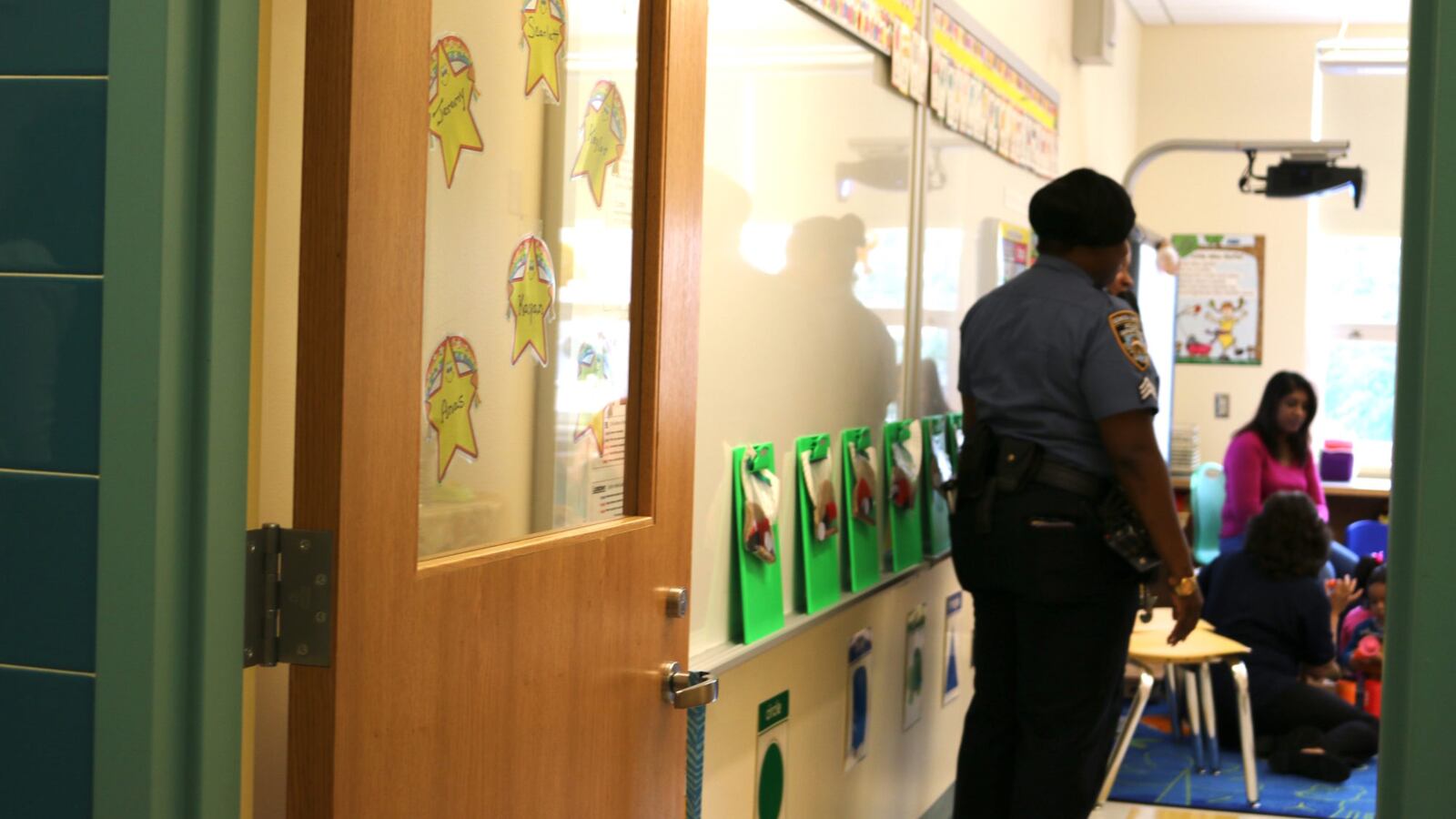Months after a threat locked down the school district I work in, students and staff are still reeling.
On June 3, we received a report of a gunman at one of our middle schools. While multiple police agencies searched the building, the rest of our district was on lockdown, unsure of what was happening.
Eventually, we learned a student had called in a false report. But the fallout was like nothing I’ve ever experienced. As prepared as we were to protect our students, the crisis left a lasting impact on every member of our school family. Some of our children no longer see school as their safe place. Some teachers struggle, too.

After the incident in June, we spent hours debriefing. We worked with law enforcement agencies. We shifted professional development time away from reading and math instruction so we could run safety drills with teachers instead. We went above and beyond the state-mandated hours of training on physical security. And all of that took resources that hadn’t been budgeted for school safety.
Likewise, we found ourselves revisiting recent renovations to our elementary school because of a small detail with potentially huge impact. The doors were designed to lock with keys – which means a person needs to run over and manually turn them – rather than flip locks. We’re spending more than $40,000 to fix this so that teachers can more easily protect students from a potential shooter.
Was it worth it? Of course. It also meant we were unable to update our outdated learning spaces. Likewise, local residents would like us to add a school resource officer. But at budget time, we will have to make a choice between that officer and a teacher.
The reality is that, in most cases, every dollar allocated to advance safety is money taken from teaching and learning.
Our district is not alone when struggling under the rising cost of security. In 2021, schools and colleges spent $3.1 billion on safety precautions. Yet, as The New York Times reported, researchers at John Hopkins University found little evidence that major infrastructure modifications have stopped violent school events. An article in The Washington Post went so far as to say, “Experts call it ‘school security theater’ – the idea that if a school system buys enough technology or infrastructure, it can keep its children safe from the horrors of a gunman.”
Even so, what is so tough about these decisions is that students and teachers’ feelings of physical safety make a big impact on our schools. As administrators, teachers, and parents continue to see how school violence is threatening our kids’ emotional health and their education, I hope legislators can lessen the financial burden on districts that are making every sacrifice possible to defend our students.
The U.S. Department of Education has announced $1 billion in grant funds will be available through the Bipartisan Safety Communities Act, one step in that direction. Now, legislators must monitor where spending is most effective. Lawmakers should be under the microscope to determine if their decisions to allocate funding to school safety is the best way to defend our most vulnerable, just as schools and teachers must defend their spending and curriculum decisions.
In my district, we work hard to create a welcoming environment for all students every day. We also have to pause throughout the day to remind students what to do in case of a threat. What to do in the classroom. The cafeteria. The playground.
The reality is that, in most cases, every dollar allocated to advance safety is money taken from teaching and learning.
We want to continue to prioritize social-emotional support – not only for the trauma students and educators experienced in June, but for what they may continue to experience as we practice lockdown drills. And that’s before we even get to working on social-emotional skills to cope with the normal situations they encounter in their day-to-day lives.
Schools everywhere are weighing these costs. Since 1999, more than 300,000 kids have been on campus during an act of gun violence, according to a Washington Post estimate. Unfortunately, districts nationwide have been left to fortify their schools while also trying to address other overwhelming issues.
During COVID, we picked up the banner of mental health, made sure our kids are fed, and stepped up in so many other ways. But protecting our kids from guns with limited funding, too? It’s too much.
It takes tremendous courage for school leadership to weigh these competing priorities and make difficult decisions. I feel called to help others understand how hard it is for us to eliminate safety threats and still accomplish all of our other educational goals, too.
Kelly Carpenter-VanLaeken is the chief academic officer of the Gananda Central School District in New York. She began her career in education as a social studies teacher and then became a principal. Kelly is a member of the Institute for Education Innovation and a board member of the GVASCD.



